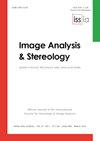自动测量足部畸形:平足、高足弓、跟骨骨折
IF 1
4区 计算机科学
Q4 IMAGING SCIENCE & PHOTOGRAPHIC TECHNOLOGY
引用次数: 4
摘要
足部畸形的x线测量用于确定诸如扁平足、高足弓或跟骨骨折等情况。这些测量是通过估计四个角度来实现的。手动评估这些角度是耗时的,更不用说这种近似的不可避免的错误。据笔者所知,目前还没有针对这四个角度的研究。本文提出了一种基于极端随机树的角度自动评估算法。此外,这个诊断辅助系统的目的是尽可能通用,并可以在某种程度上适用于其他类似的问题。为了证明该方法的有效性,将自动测量与手动测量的相关性与手动测量与手动测量的相关性进行比较。在所有四个角度的情况下,手动-手动测量比较的显著性水平小于0.001。在所有情况下,自动-手动测量比较的显著性水平也小于0.001。结果表明,上述角度的搜索可以实现自动化。即使使用通用算法,也可以实现高度的精度,从而实现更有效的诊断。本文章由计算机程序翻译,如有差异,请以英文原文为准。
AUTOMATED MEASUREMENT OF FOOT DEFORMITIES: FLATFOOT, HIGH ARCH, CALCANEAL FRACTURE
Radiographic measurements of foot deformities are used to determine, among other things, such conditions as flatfoot, high arch, or calcaneal fracture. Those measurements are achieved by estimating four angles. Manual assessment of those angles is time-consuming not to mention inevitable errors of such approximation. To the best of the authors knowledge, currently there is no research focusing on finding those four angles. In this paper an algorithm for automatic assessment of those angles, based on extremely randomized trees, is being proposed. Moreover this diagnostic assisting system was intended to be as generic as possible and could be applied, to some degree, to other similar problems. To demonstrate usefulness of this method, correlations of automated measurements with manual ones against correlations of manual measurements with manual ones are being compared. The significance level for manual-manual measurements comparison is less than 0.001 in case of all four angles. The significance level for automated-manual measurements comparison is also less than 0.001 in all cases. The results show that the search for the aforementioned angles can be automated. Even with the use of a generic algorithm a high degree of precision can be achieved, allowing for a more efficient diagnosis.
求助全文
通过发布文献求助,成功后即可免费获取论文全文。
去求助
来源期刊

Image Analysis & Stereology
MATERIALS SCIENCE, MULTIDISCIPLINARY-MATHEMATICS, APPLIED
CiteScore
2.00
自引率
0.00%
发文量
7
审稿时长
>12 weeks
期刊介绍:
Image Analysis and Stereology is the official journal of the International Society for Stereology & Image Analysis. It promotes the exchange of scientific, technical, organizational and other information on the quantitative analysis of data having a geometrical structure, including stereology, differential geometry, image analysis, image processing, mathematical morphology, stochastic geometry, statistics, pattern recognition, and related topics. The fields of application are not restricted and range from biomedicine, materials sciences and physics to geology and geography.
 求助内容:
求助内容: 应助结果提醒方式:
应助结果提醒方式:


